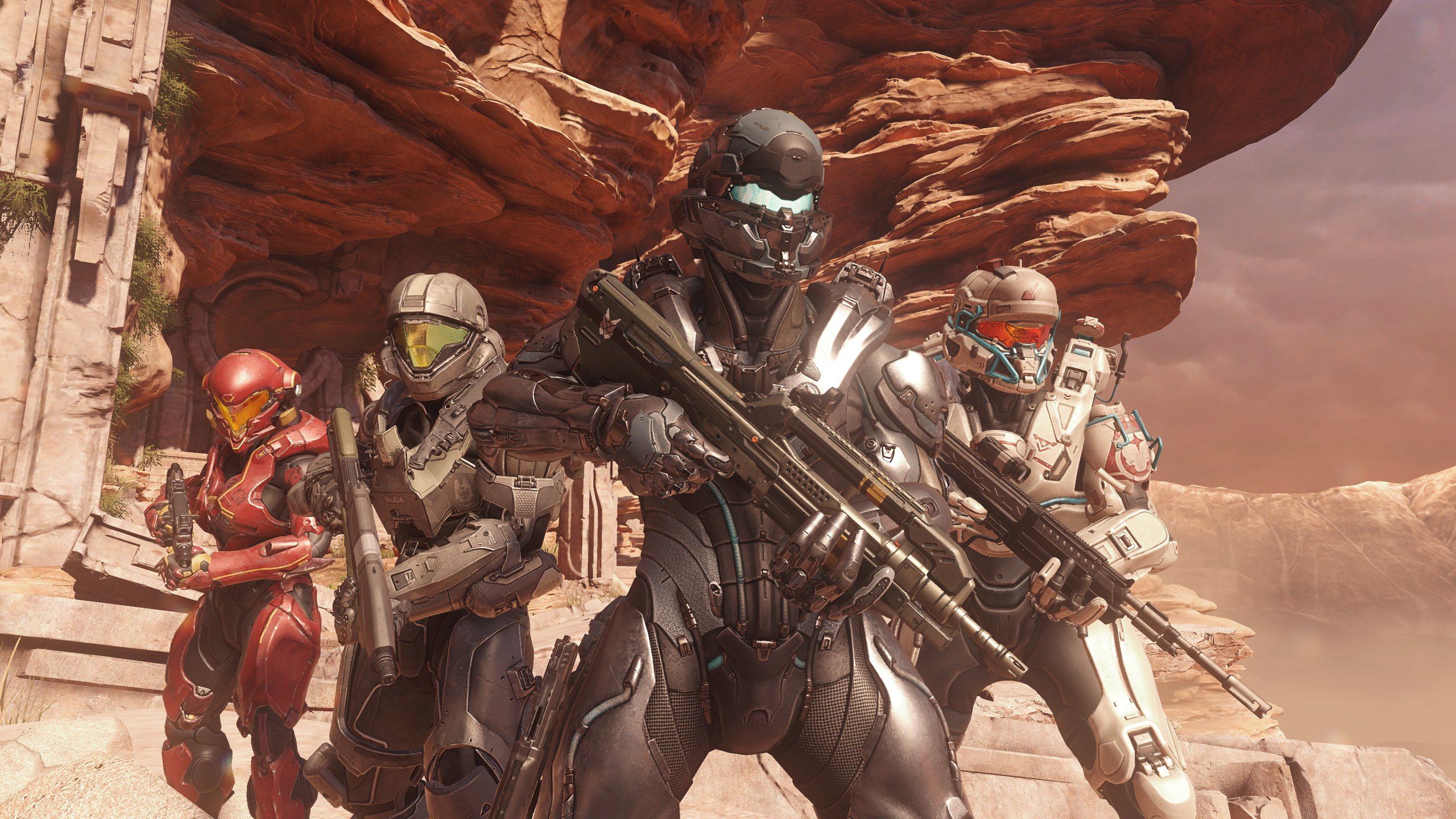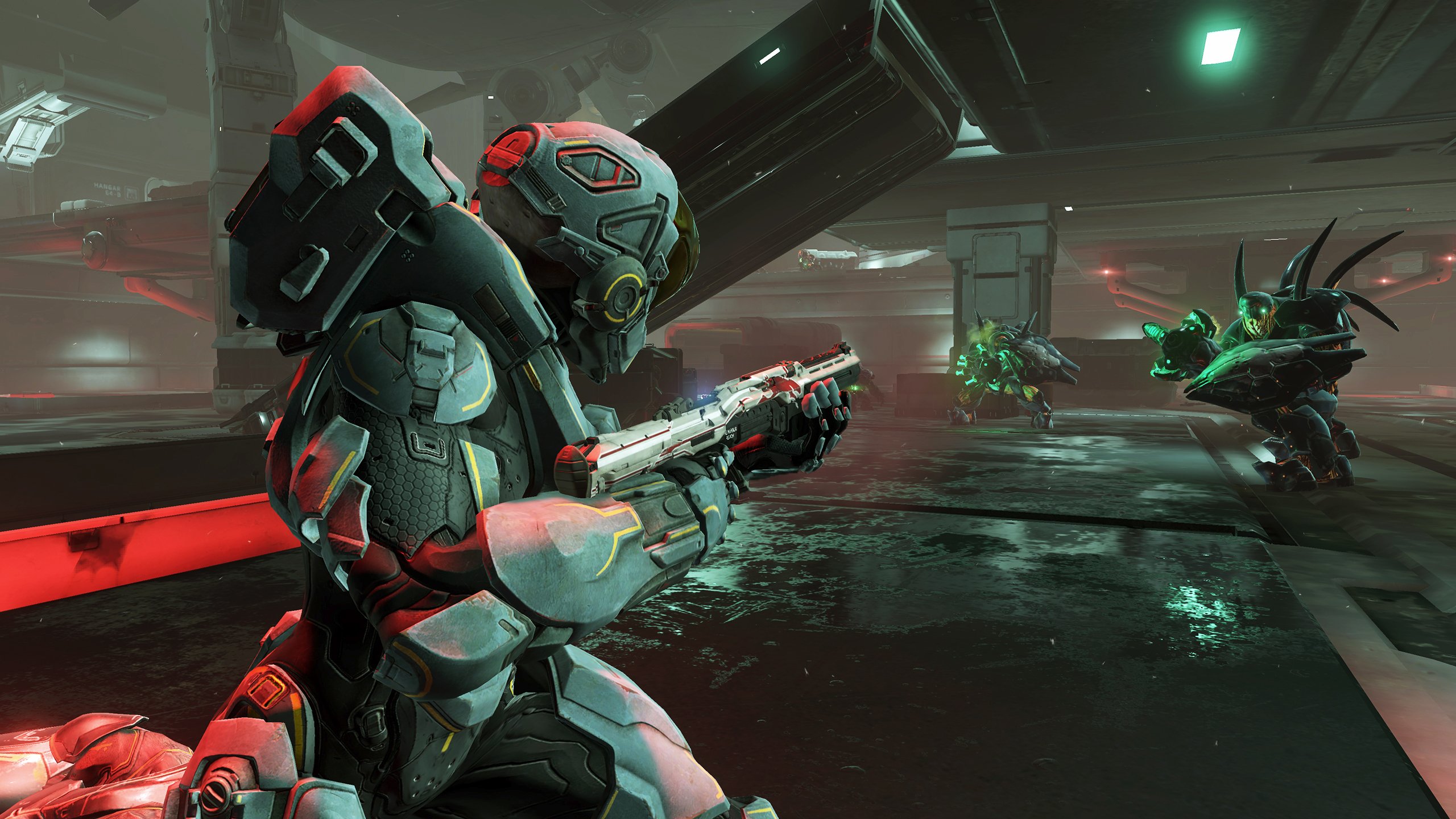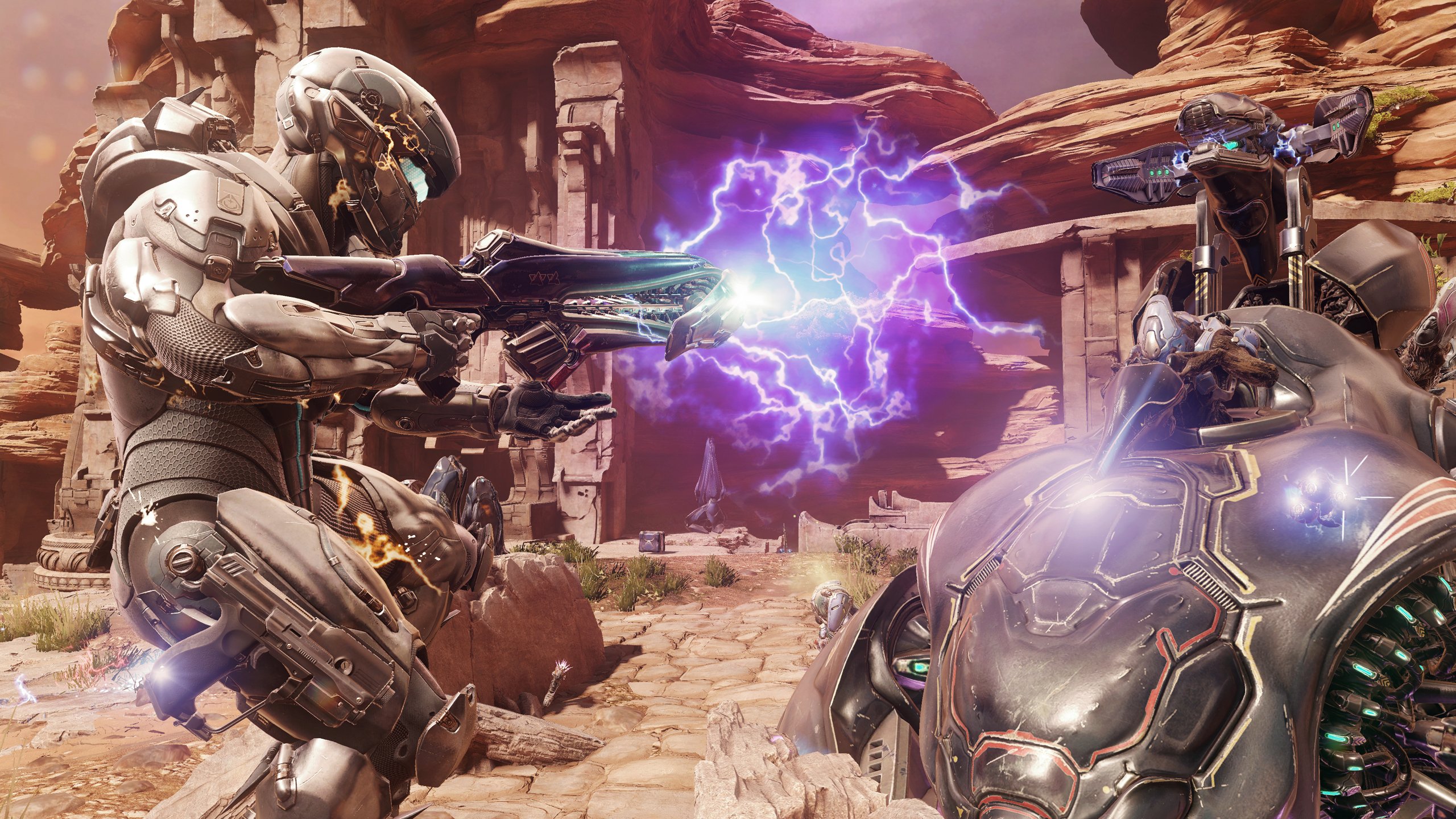Halo 5: Guardians campaign isn't as Call of Duty-esque as you think
Halo is approaching “holy text” levels of significance in people’s minds by this point. Bungie’s famous 30-second combat loop doctrine is the unimpeachable, transformative sacrament, those wide-open, blood-spattered sandboxes our promised land, with shiny, shiny Master Chief standing above it all, a faceless gunmetal Messiah. Suggest that any of these elements be changed or, Cortana help you, be the one changing them and watch as conservative zeal rains forth like so much 140-character brimstone.
And hey, why not? Halo’s pretty cool. These days, the series is less interesting for setting the standard for FPSes on consoles and more for being the genre’s steadfast stick in the mud - a loping, strategic shooter in a world of twitch-shooter, Twitch-friendly insta-death bloodbaths.

Which makes the not-insignificant maelstrom of flack that 343 Industries has been copping for how it’s treating the franchise it was created to protect (I’ll spare you the lengthy, unpleasant metaphor for the Catholic church here - just know that, yes, I considered it) rather interesting.
From the outside, those changes look widespread, and deep - seen most in the series’ most revered relic, the Campaign. Halo’s long-standing love affair with split screen co-op is over, jettisoned into the heavens to make room for a 60fps flow. The Chief is now only half of the single player experience (and is conspicuous in his green-hued absence from the game’s opening cinematic), with players taking up position behind the eyes of Luciferian good-bad guy, Spartan Locke. Perhaps most damning of all, the first showing of Campaign gameplay came with a set piece-heavy vertical slice at E3.

Locke was running through corridors both tangible and invisibly-walled, following conspicuous story waypoints and [spits] having some control taken away as a platform collapsed and he slid along on his bum for a few seconds. It was different. It was was constricted. It was Call of Duty.
Which is weird, because when I played it last week, it felt more or less like good old Halo.
Two new levels were on show, Blue Team’s first playable mission - efficiently titled “Blue Team” - and “Enemy Lines” a mid-game Fireteam Osiris mission. While their cast of characters and locations differed wildly, they’re connected by a single philosophy - both are faintly obsessed with funnelling you into an enormous space, filling it with enemies, and letting you get on with good old alien hunting in whatever fashion you deem fit. By which I mean “they’re Halo levels”.
Sign up to the GamesRadar+ Newsletter
Weekly digests, tales from the communities you love, and more
“Blue Team” takes place through the corpse-strewn interior of an out-of-contact ONI ship - Chief and his squadron of grim, all-business Spartan IIs make their way through hangers and down elevators, discovering more and more evidence of a Covenant plot (and some more surprising events that are so spoilery I literally had to sign a bit of paper written by a lawyer to say I wouldn’t spoil them for you right now). While it comes with the route-one macho storytelling that 343 rung in with Halo 4, the level design certainly draws on the older games for inspiration.
“Enemy Lines”, set on the Elite homeworld of Sanghelios, takes a similar - if slightly trickier - approach. It’s set amidst a battle between factions, as friendly Covenant ships fill the skybox with explosions trying to take down an enormous, techno-squid weapons platform called a Kraken - while Locke and his Fireteam Osiris have a slightly smaller scale challenge. You’re on the hunt for a lost Forerunner artifact/weapons system ignition key, leading you through ancient architecture more reminiscent of Indiana Jones films than Halo games. Multi-leveled temples form your sandboxes here, and are peppered with snipers, gun turrets, even secrets (certain walls can be smashed down with Spartan shoulder charges, and certain uncovered passages contain amusing little audio logs made by bored Grunts).
Human companions are definitely preferable, and my time coordinating with a friend on how to take down a group of tucked-away Jackal snipers (answer: one of us sneaks up to their camping spot, the other pins them down with Shade turret plasma fire) was absolutely the best fun I had with the game in hours of play. That sense of being a supersoldier just slightly out of their depth has always led to Halo’s greatest moments - the slow battle up the Silent Cartographer beach on Legendary springs to mind - and that teetering balance of power and recklessness is here in full force on many occasions. The Spartans might be considered more nimble metahumans than before, equipped as they are with thrusters, ground pounds and, shockingly, the ability to climb over small ledges, but they still ultimately feel like graceful man-tanks, stomping about, stopping for a shield recharge and stomping anew, an oom-pah rhythm of death.

In fact, their biggest alteration is in just how chatty they are - in audio terms, this is easily the busiest Halo game to date. Fireteam Osiris in particular are action-movie quipping constantly, dynamically congratulating each other on kills and generally having a good time of it all. Even the terse John-117 is forced into discussion on many occasions - Blue Team might be rather more stoic than their Spartan IV hunters, but they still find time to discuss mission parameters and express wearied collective shock at finding anothergalactic threat as you battle.
That feeling extends to both sides of the fight - Grunts are as adorably put-upon as ever, but Jackals hiss insults, Elites tell their squads to shut up in case of an ambush (spoilers: you ambush them) and Hunters… well, Hunters don’t say much because they’re made of hundreds of symbiotic worms. The beauty here is how this stuff feeds into the sandbox warfare - with lines often playing out according to your actions, I feel as though they’re entertaining enough to act as supplementary rewards for playing your way.
Personally, I don’t play locally enough for that split-screen sacrifice to make me lament the trade-off, but this is always going to come down to personal preference. At the very least - and barring any Master Chief Collection-style disasters - being connected to Microsoft’s cloud servers should make for a seamless online multiplayer experience.
Any change to a series as storied as Halo is likely to bring about a glut of comment, but it’s probably more surprising just how much of the core game feels familiar. Unless 343 has pulled the nano-wool over my eyes and gone out of its way to show off the only two campaign sections that lean towards the religious tenets of Old Halo, I’m happily able to report that that original gameplay trailer is an outlier, an indulgent scrap of story-guff that sits among long stretches of pleasingly traditional fare. Amen.



